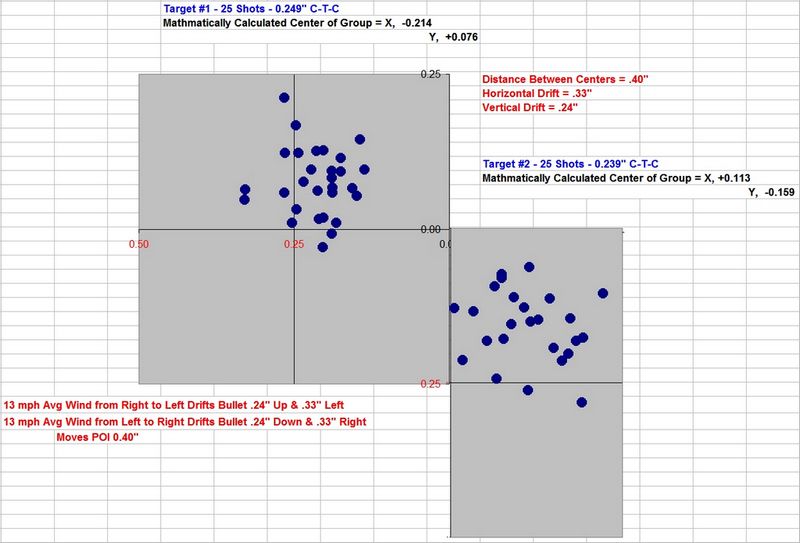HuskerP7M8
Member
...will put this post to bed, unless any additional thoughts need posting : )
Unless someone does some testing in a strong crosswind with a 'well known behavior' bench gun that wants to show us all something when tested in a strong crosswind, either side!
Testing conducted 1/5/2009 in the middle of an open field with a rotating bench.
Two targets and the bench were set up with the wind perpendicular to course of fire.
25 shots fired at 279 deg's and a second 25 shots were fired at 99 deg's using a competitive BR rifle chambered in 22lr.
4 Electronic wind sensors located along course of fire recorded a wind that varied from an average on target #1 of 6.9mph with one recorded gust to 10.6mph, to target #2 with an average of 6.1mph with a recorded gust of 8.9mph.
The results: Nearly identical to ballistic theory for "Aerodynamic Jump" when calculated by using the Sg (Stability factor) derived from twist rate, velocity, and the physical length of the projectile. Edit: The Miller equation was tweaked by me with the use of a subsonic factor to correct for 22lr ballistics.
Further explanation: The vertical deflection occurs in the first few precession cycles after the bullet enters into a crosswind and is forced to realign its axis with the oncoming air flow. In other words, as the bullet is torqued to weather-vane into the wind, it sets up a gyroscopic action (Right Hand Rule for simplicity), which results in the bullet being deflected down when its axis is torqued by a left-to-right crosswind and vise versa. (Right twist barrels only).
Landy



